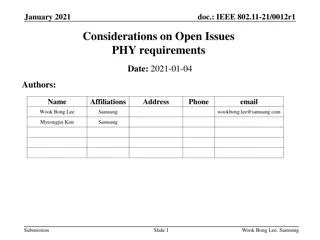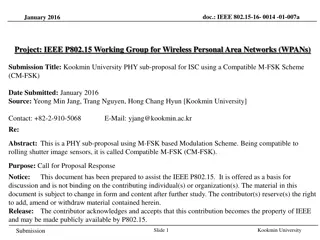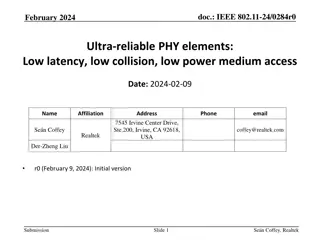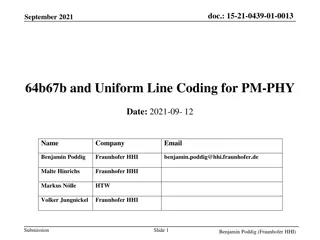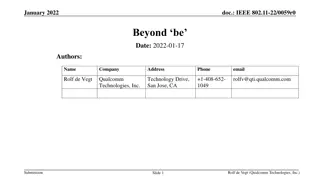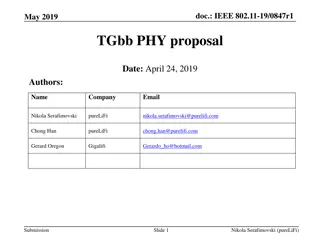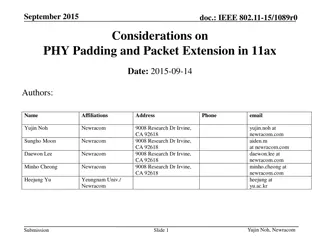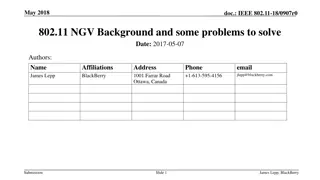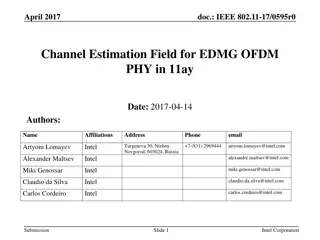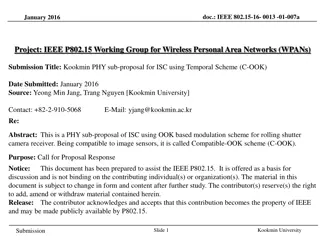
Internal Energy and Gas Properties
Learn about the internal energy of gases, gas properties, and gas law equations in physics. Explore topics such as Boltzmann distribution, average kinetic energy, and the relationships between pressure, volume, temperature, and gas constants.
Download Presentation

Please find below an Image/Link to download the presentation.
The content on the website is provided AS IS for your information and personal use only. It may not be sold, licensed, or shared on other websites without obtaining consent from the author. If you encounter any issues during the download, it is possible that the publisher has removed the file from their server.
You are allowed to download the files provided on this website for personal or commercial use, subject to the condition that they are used lawfully. All files are the property of their respective owners.
The content on the website is provided AS IS for your information and personal use only. It may not be sold, licensed, or shared on other websites without obtaining consent from the author.
E N D
Presentation Transcript
Physics 2 Mar 22, 2019 Get out p140 #19-29 for Hmk Check P3 Challenge A gas that has a volume of 28 liters, a temperature of 45 0C, and an unknown pressure has its volume increased to 34 liters and its temperature decreased to 35 0C. If you measure the pressure after the change to be 2.0 atm, what was the original pressure of the gas? Today s Objective: Internal Energy Assignment: Ch 3.2, p141, #30-32 Agenda Boltzmann Distribution Average K.E. Internal Energy
Homework Ans only 27. a. 0.03 mole b. 1.81 x 1022 molecules c. 0.872 g 28. a. 0.0227 m3 b. 0.176 kg/m3 c. 1.41 kg/m3 29. same density 19. 1.46 x 109 Pa 20. 88 g CO2 21. 10.0 min 22. (see graph on board) 23. 10 atm 24. a. 981 Pa b. 1.217 x 1022 molecules c. 0.0728 m3 25. 0.0454 m3 ; 56 g 26. 1.04 x 105 Pa
Boltzmann Distribution Boltzmann distribution is a result of statistical mechanics that describes how the random particle speeds of an ideal gas are distributed. Note: Statistical mechanics is the application of statistics to the gas particle behavior. Unsymmetrical distribution. Always a finite probability at any high speed, but zero at 0 speed. The ranking of temperature for the three graphs are Blue<Red<Green. Notice the peak location increases and lowers and the speeds spread out as temperature increases.
Typical Particle Speed Three types of average speed values for the particles of an ideal gas most probable speed (mode) left red peak average speed (mean) center blue c (vrms) = root mean square speed corresponds to average kinetic energy (temp) right green peak Best indication of temperature is c because temperature IS average kinetic energy IB assumes c represents all three. Unfortunate that IB uses c for both vrms and the speed of light. Beware: This is NOT c = 3 x 108 m/s
Average Kinetic Energy 1 2 = 2 E m c The average K.E. is related to the average speed, c, where ma is the atomic mass of a single gas particle. Note on units: 1 u = 1.66 x 10-27 kg From the ideal gas law and statistical mechanics: PM dRT = K a 3 2 = E k T K B 1 3 = 2 P dc R N 23J = = 1.38 10 k And other basic relationships: M = molar mass ? = ??? K B ? =? A ? m M N N = = = n M N m A a A
Internal Energy of a Gas 3 2 If the average kinetic energy of one particle of gas is 3/2 kBT, and you have a sample containing N particles, the internal energy of the sample is N times the average kinetic energy. ? = ??? From this, and recalling the definitions of kB and moles you can derive the other possible expressions for the internal energy of a gas, U. Problem solving is either of the plug and chug variety, or is algebra derivation of formulas types. So know these two fundamental relationships. (Only the first ??=? the IB packet.) Notice that both average EK and U only depend on T in K. = E k T K B N N R N = = n k B A A 3 2 3 2 = = U nRT PV ???? is in
Root Mean Square Velocity Because kinetic energy depends on both mass and velocity, two gasses with the same kinetic energy can have different vrms if they have different molar masses. (you will derive this for homework) 3 rms u M RT = Where M is the molar mass of the gas. Compare the distributions for all of the gasses at a common temperature. The heavier molecules move slower for the same kinetic energy. Root mean square velocity depends on the molar mass of the gas. Ex: Calculate the root mean square speed of a hydrogen molecule at STP.
Exit Slip - Assignment Exit Slip- What s Due? (Pending assignments to complete.) Ch 3.2, p141, #30-32 DOWNLOAD Engineering Physics Text B!!!! What s Next? (How to prepare for the next day) Start studying for the U6 Thermal Physics Test on the second Tuesday after spring break. (April 9)


